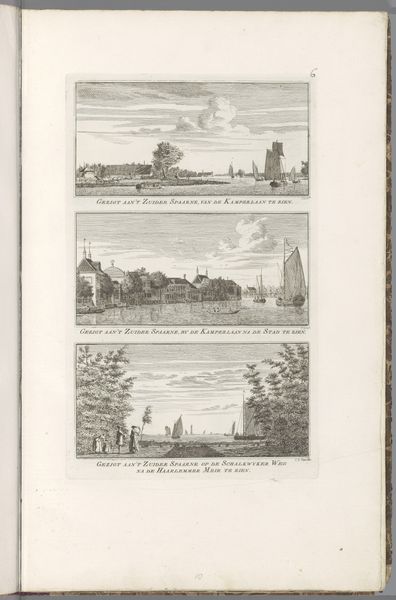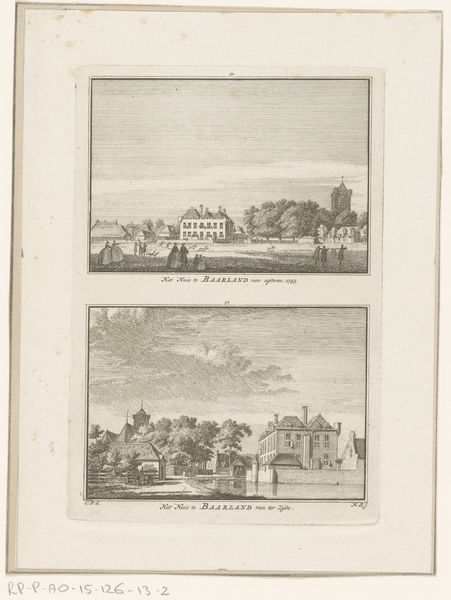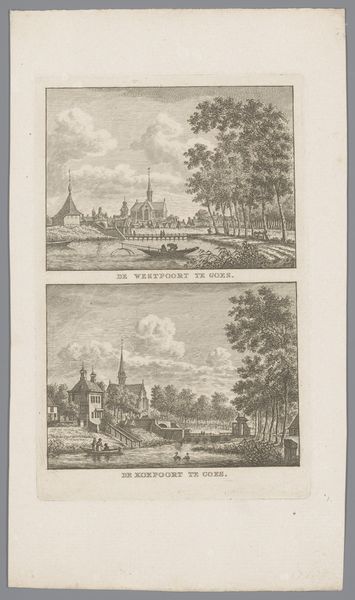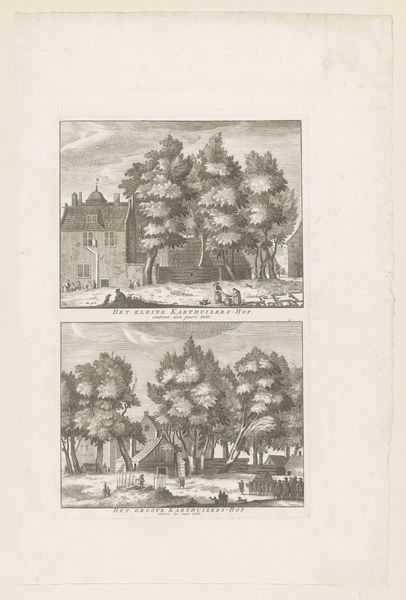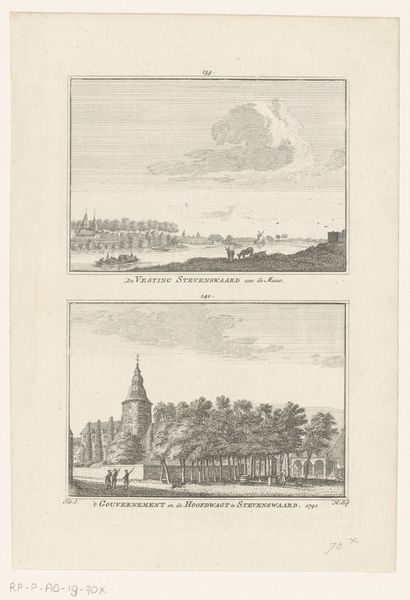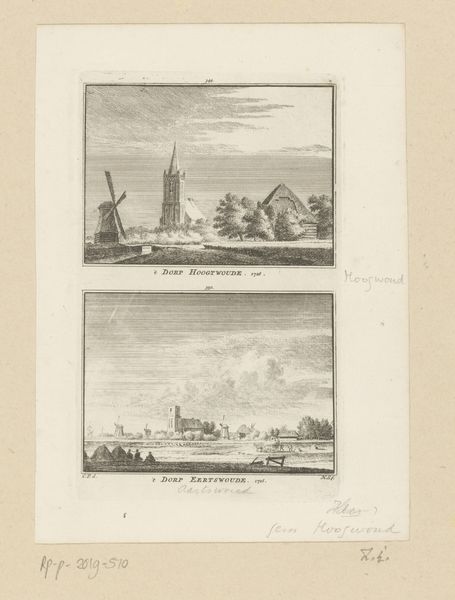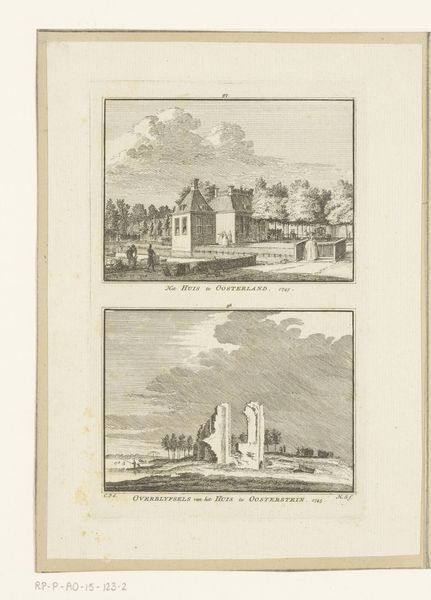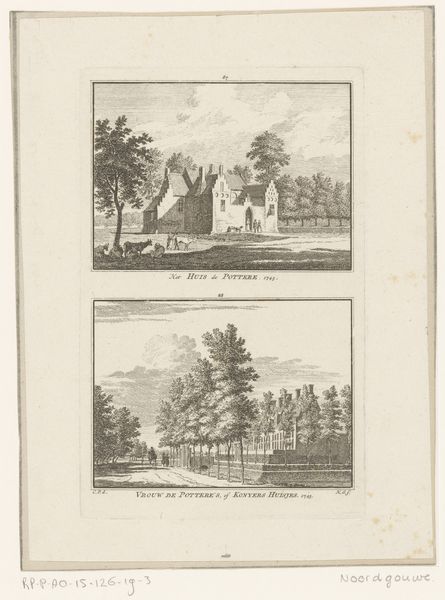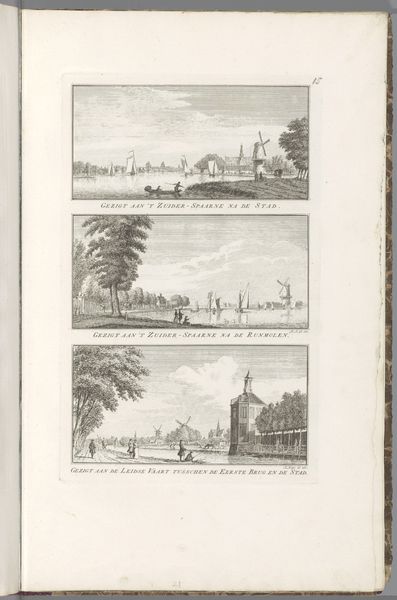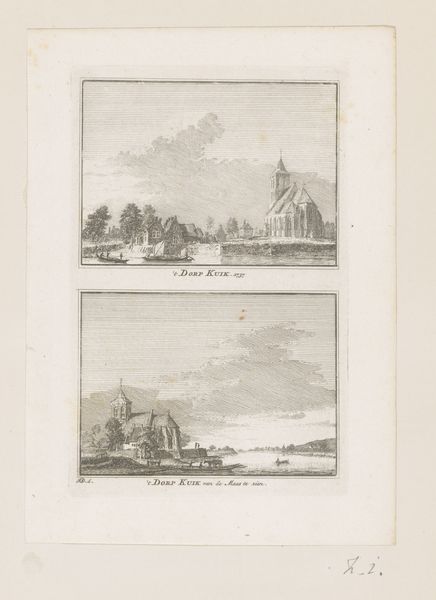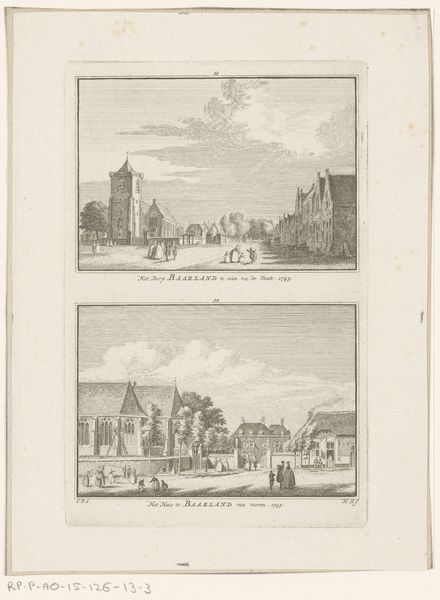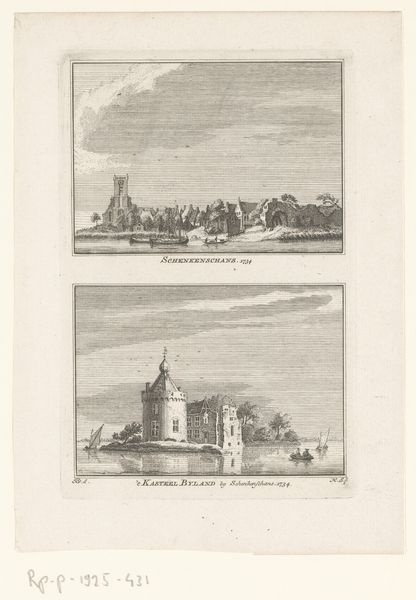
print, engraving
# print
#
landscape
#
cityscape
#
engraving
Dimensions: height 160 mm, width 103 mm
Copyright: Rijks Museum: Open Domain
Hendrik Spilman created this print of Oostkapelle in 1745, using etching techniques. Prints like this one played a crucial role in shaping public perception and promoting Dutch identity during the 18th century. The symmetrical composition and detailed rendering of architectural elements reflect the values of order and prosperity that the Dutch Republic sought to project. Note the contrast between the image of the church and wealthy manors in the top view, and the village with its distinguished looking citizens in the bottom view. These images reflect the social hierarchy of the time, with the wealthy landowners and religious institutions holding significant power. The meticulous detail in rendering the landscape and architecture speaks to the rise of scientific observation and documentation during this period. Careful analysis of such prints, using historical archives and period documents, allows us to understand the complex interplay between art, society, and power in the Dutch Golden Age.
Comments
No comments
Be the first to comment and join the conversation on the ultimate creative platform.

